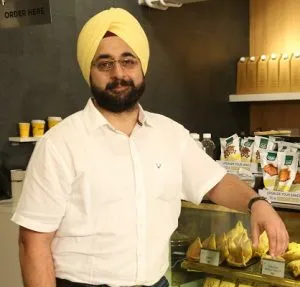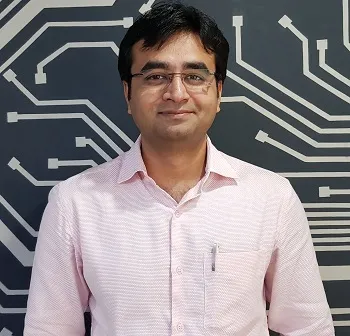How OYO, Swiggy and Chai Point cracked the repeat user code
The value of returning customers is critical for the growth and long-term success of any business. But there are no short cuts to ensure customer loyalty, industry leaders tell us.
How do we make a customer come back and shop again and often? This is the one question most consumer-facing businesses want an answer to.
With the cost of new customer acquisition for online businesses still quite high (over Rs 1,000), companies are now trying to maximise the “lifetime value of a customer”. It is cheaper to get a customer who has already tried your service once to come back than get a new customer. But enticing a customer to return for more is easier said than done.
YourStory spoke to three companies - leaders in their own categories - to understand what they did to ensure high repeat rates.
Hospitality venture OYO, food delivery leader Swiggy, and beverage brand and tea store chain Chai Point might seem like business models that are inherently conducive to high repeat rates. This is only partly true.
For instance, a customer might order her office lunch a couple of times a week on Swiggy, but might opt for a takeaway on other days. How can Swiggy ensure that each time a customer wants to get food home or to the office, s/he only uses Swiggy?
These companies are also at an interesting phase of growth right now. All three are leaders of their own niches. They are all past the initial phase of growth—the business models are pretty much set, initial investment to ensure super-fast growth is done, and leadership position is pretty much established.
Now is the time for all three to ensure that sustainable growth happens.

The key metric
Why is the repeat user rate a key metric?
Burhanuddin Pithawala, VP-Conversions at OYO, says: “Any company which is to grow substantially over a period of time needs to see how many customers are coming back. During late 2015, we were growing rapidly and lots of customers were coming in. But many of us have worked in other companies and we have also seen examples globally of companies, like Groupon, that acquired millions of customers but also lost millions of customers. We knew you can't grow the pie without ensuring repeat visits. So we tracked this number very closely since then.”
Burhanuddin, who joined the company in 2014, shares that the number of repeat users has risen by 30 percent from late 2016 until now.
Chai Point’s Founder Amuleek Singh Bijral says:
Repeat orders are the heart of the business.”
Chai Point sees a 50 percent to 70 percent repeat in online orders a month and repeat rate of two to three times a week in store.
Getting the basics right
So how did they go about ensuring high repeat rates? The fundamental requirement is a no-brainer. Getting the basic service right is the key to getting a customer to come back.
Sriharsha Majety, Co-founder and CEO of food delivery market leader Swiggy, says:
We do our basic service really well. We are boringly predictable. Our hope is there should be no touch points between a customer and us beyond them placing the order on the app and us handing over the food to them. It is a challenging business and we were able to get the basic service right through a mix of technology and operational excellence. One of the big contributors was having our own fleet. We had five riders when we started; we have crossed 20,000 riders now. We have India’s largest last-mile delivery fleet.”

Sriharsha is reiterating that customers should be able to associate reliability of service with your brand. For that to happen each part of the process has to be mapped, challenges identified and solutions implemented. It might also mean making heavy investments in areas that might not show returns immediately.
The Swiggy fleet of delivery personnel is an example. By having its own fleet, Swiggy was able to “control” the experience and process.
This is echoed by Chai Point’s Amuleek.
“One of the foremost things is building a strong operational backend. The advantage is you have every single possible element important for a great consumer experience in your hands. Then it’s about ensuring the focus on operations trickles down to every single employee in the company,” says Amuleek, whose company competes with Chaayos.
Chai Point, which has around 90 outlets in Bengaluru, Hyderabad, Pune, Mumbai and Delhi, has raised around $13 million in funding so far.
Getting the basics right is especially important in a category like hospitality. In this category if a guest has a bad experience even once, he is extremely unlikely to return.
“We realised that initiatives like offers and discounts work only if the basic quality is set. Even if you give a room completely free, in this category you need to ensure quality,” Burhanuddin says.
A couple of years ago OYO faced issues of bad customer experience. At that time OYO used to aggregate hotel rooms, which meant a hotel might give it only a few out of all the rooms in the property. This meant less control over quality. Over the past few months OYO has moved to a franchise and manage-and-operate model, where it has complete control of all the rooms in a hotel. This has helped the company improve quality of service.
OYO is among the top funded startups in the country, having raised $450 million so far. Its direct competitors include Treebo and FabHotels. OYO has a presence in over 230 cities with over 8,500 properties listed. It claims a Gross Booking Value run rate of $400 million.
Two programmes have helped OYO ensure high levels of quality.
One is the OYO Captain programme. Under this, OYO has a certain number of Captains for each city. Each of these Captains—there are over 200 across the country—is responsible for every aspect of quality and service of a certain number of hotels.
The moment a customer books a room, he is assigned a Captain. The Captain’s responsibilities include ensuring the room is up to the mark, the hotel facilities are in top working condition, and training hotel staff. The Captain - responsible for between 100 and 200 rooms - also offers a Concierge service.
This is especially useful for the franchise part of OYO’s business, where hotel operations are not managed directly by the company.
The second programme - Krypton - is closely linked with the first one. Krypton, a mobile app, is the lifeline for OYO Captains. It offers all details of every hotel under a Captain’s territory and of every guest who is checking in.
Burhanuddin says OYO Captains get real-time data on what needs to be done like issues raised by guests, who is checking in at what time, and which rooms have what problems.
We have a completely tech-enabled workforce; we can do end-to-end loop closure. We can pro-actively reach out to guests and resolve problems. We also do full lifecycle management of a hotel through Krypton, from taking a hotel live to resolving issues. The programme knows that a particular room in a hotel had a particular issue. Until that gets resolved, the room won’t go live on OYO for booking,” Burhanuddin says.
Product differentiation and filling gaps

Getting the basic service right isn’t enough. You need to keep a customer interested and excited, and also keep offering him more options, more reasons to come back to you.
Indians love their chai. So Amuleek’s life and business should be sorted, isn’t it? However, Amuleek says differentiation is important even in chai.
It is important to create differentiators and give people the options of different kinds of chai. You also need to make your consumers aware of choices. For example, we introduced jaggery instead of sugar and we made sure that our customers were aware of it. And then when the customer comes in or orders it with jaggery, we need to make sure the taste suits their palate,” Amuleek says.
Listening to the customer is important. Swiggy’s Sriharsha says they saw a significant percentage of users ordering around 15 times a month on Swiggy. On an average a customer who has spent about six months on Swiggy orders at least five times a month. But Sriharsha was not content with these numbers.
“People eat hundreds of times a month, if you include snacking. We asked how we can capture this entire market,” says Sriharsha, who spoke with YourStory on repeat users when Swiggy launched its cloud kitchen model, Access.
They spoke to customers to understand what needed to happen in order to place more orders on Swiggy. The answers primarily fell into three buckets—the customer’s locality didn’t have many good restaurants, the customer felt guilty about eating restaurant food too many times and wanted “home-style meals”, and the customer didn’t want to spend Rs 300 to Rs 400 for every meal.
Swiggy’s new initiatives are an attempt to solve the first two issues.
Its recently launched cloud kitchen model, Access, offers space for restaurant partners to operate delivery-only kitchens. This allows restaurants to expand their footprint to new locations with minimum investment. Customers also get access to a larger restaurant pool.
Swiggy now also lets customers order from some slightly far off restaurants at an additional fee. The company is also experimenting with its in-house brands, The Bowl Company and House of Dabbas that provide healthier and home-style meals.
Swiggy, founded in 2014, has raised over $155 million in funding from investors like Naspers, Accel India, SAIF partners and Bessemer Venture Partners. It operates in seven cities and crossed the four million orders a month mark in July. Swiggy’s primary competitors are Zomato and Foodpanda, with the latter getting acquired by taxi hailing company Ola earlier this week.
Uber recently launched its food delivery service UberEats in India while Google has been quietly testing its food delivery and home services app Areo in Bengaluru, Delhi, Gurgaon, and Mumbai.
OYO too has diversified its offerings by launching Townhouse, where it operates the hotel directly, and adding a homestay category.
Rewarding the customer
OYO Founder Ritesh Agarwal has in the past said he will not use discounts to attract customers. But the company does reward loyal customers.

Burhanuddin says they do offer discounts but “not to everyone”.
“We offer this to people who are already aware of the brand, have booked in the past, and have come to us multiple times. Then we sweeten the deal further,” he says.
While OYO does not have a formal loyalty programme, Burhanuddin reveals that when a customer crosses a threshold of a certain number of bookings he gets an internal tagging that reflects across the system, from call centre to Captains to hotel management.
“They get prioritised across the system. Customers feel special,” Burhanuddin says.
He also reveals that it is best not to give an offer or a discount until you know for sure whether that person is really interested in making a booking or placing an order. He says:
If a user is not interested in making a purchase, no discount will entice them. People buy and stick to you because of brand and quality. That's why we focused on these areas, not on discounting and price. That is one of the key understandings we have had. It is a hard thing to do, because discounting seems like the easier bet with faster short-term returns.”
So there you have it. The secret to high repeat user rate is that there are no short cuts.







